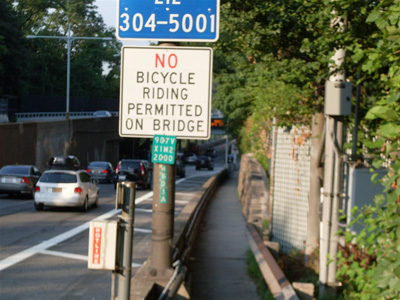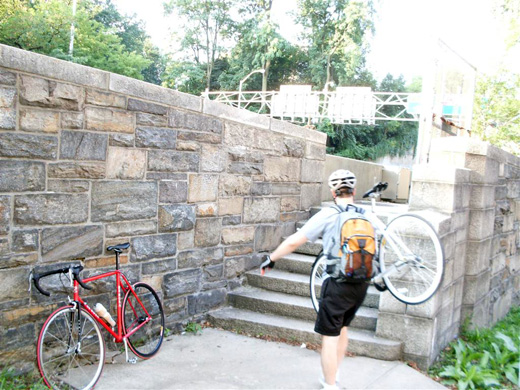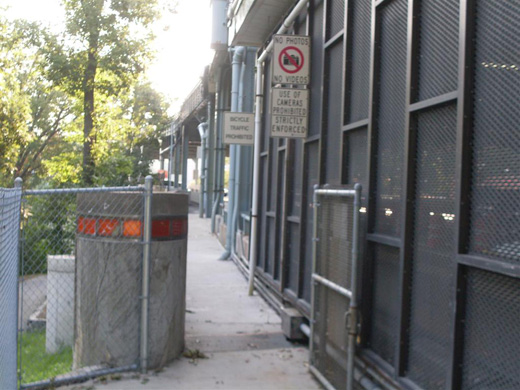Henry Hudson Bridge Path Re-Opens — With a Cycling Ban
 The view of the Henry Hudson path from the Bronx side. Photo: James Rather
The view of the Henry Hudson path from the Bronx side. Photo: James RatherResidents of Northern Manhattan and the west Bronx have been waiting more than three years for the re-opening of the bike-ped path on the lower deck of the Henry Hudson Bridge. When the moment finally came earlier this summer, however, cyclists got a nasty surprise: MTA Bridges and Tunnels still won’t allow biking on the bridge.
The Henry Hudson provides a safer crossing over the Harlem River for cyclists than the nearest alternative, the Broadway Bridge. But, as signs on both ends of the path announce, cycling is not allowed. Here’s what happened to reader James Rather when he recently tried to bike across:
As soon as I rode on to the path from the Inwood side, an MTA tollboth officer left his booth, looked at me, and screamed, “Walk the bike!” I yelled, “excuse me?” and he says, “You heard me, NO BIKES.” There you have it.
With this policy in effect, there is no decent and safe crossing between Upper Manhattan and the Bronx — Broadway is unsafe and the Broadway Bridge actually requires that you dismount as well, unless you want to take your chance on the roadway, with most experienced riders choosing the latter option.
MTA Bridges and Tunnels spokesperson Judie Glave said the agency’s guidelines prohibit bike riding on paths no wider than 10 feet. “Our pathways are all pedestrian walkways,” she said, including the Triborough Bridge path and the Marine Parkway Bridge path, which connects to the Rockaways. “They’re not wide enough to accommodate bike riders and walkers at the same time.”
The Henry Hudson Bridge has repeatedly been identified by public agencies as a critical link in greenway plans going all the way back to 1992 [PDF], but the MTA wasted their chance to build a wider path that will accommodate rising demand for walking and cycling. “The growing number of people riding into the West Side need to be factored in,” said Caroline Samponaro of Transportation Alternatives. “The construction of the Henry Hudson Bridge, which cyclists eagerly anticipated for more than three years, was an opportunity to build capacity
for current and future levels of bike commuting.”
Even with the current accommodations for walking and biking, the MTA’s 10-foot rule strikes advocates as arbitrary, contrary to the green goals laid out in the agency’s sustainability plan, and unnecessary, especially given today’s level of pedestrian and bike traffic. The NYCDOT-managed Pulaski Bridge, linking Brooklyn and Queens, is less than nine feet wide and sees much more bicycle and pedestrian traffic than the Henry Hudson. “The Pulaski used to have dismount signs,” said Samponaro. “The bicycle volume made that completely untenable. It’s certainly within the purview of the MTA to be able to change that policy.”
 Mounting stairs on the Bronx side of the path. Photo: James Rather
Mounting stairs on the Bronx side of the path. Photo: James Rather On the Inwood side of the path, one sign announces, “Bicycle Traffic Prohibited.” Photo: James Rather
On the Inwood side of the path, one sign announces, “Bicycle Traffic Prohibited.” Photo: James Rather




